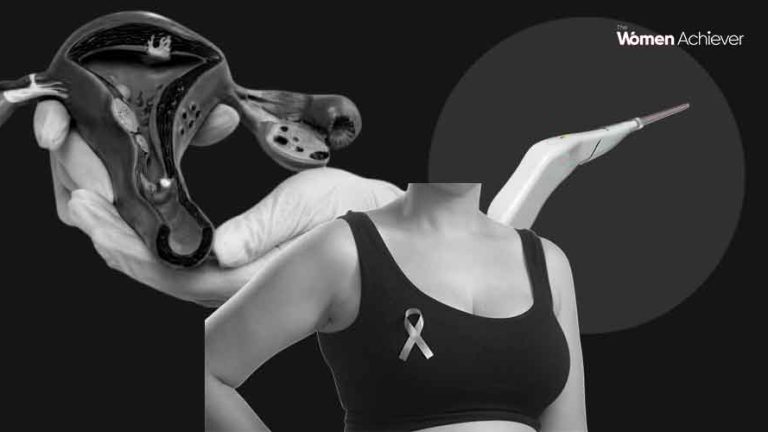Early Detection Tools for Breast and Cervical Cancer: Your Guide to Lifesaving Screenings
Breast and cervical cancers are among the most prevalent cancers affecting women worldwide. Early detection plays a pivotal role in improving survival rates, as timely diagnosis allows for more effective treatment. Advancements in medical technology have led to the development of various tools and techniques that help in the early detection of these cancers.
Importance of Early Detection
Early detection improves the chances of successful treatment by identifying cancer at its earliest and most treatable stage. In breast and cervical cancer, early intervention significantly reduces mortality rates. Awareness campaigns, routine screenings, and technological innovations have become essential components in combating these diseases.
Tools for Early Detection of Breast Cancer
1. Mammography
- Mammography remains the gold standard for breast cancer screening. It uses low-dose X-rays to create detailed images of the breast tissue, identifying abnormalities or calcifications that could indicate cancer. Digital mammography and 3D mammography (tomosynthesis) offer enhanced imaging, improving the accuracy of diagnoses.
Recommended Age: Women aged 40 and above or earlier for those with a family history of breast cancer.
Advantages: Non-invasive, widely available, and effective in detecting early-stage cancer.
2. Breast Ultrasound
Ultrasound uses sound waves to produce images of breast tissue. It is particularly useful for women with dense breast tissue where mammography may be less effective.
When Used: Often as a supplementary tool alongside mammography.
Advantages: Safe, no radiation exposure, and helpful in distinguishing between solid tumors and cysts.
3. Magnetic Resonance Imaging (MRI)
Breast MRI is a highly sensitive imaging technique that uses magnetic fields and radio waves to create detailed images. It is recommended for high-risk individuals, such as those with genetic predispositions like BRCA mutations.
Advantages: Provides detailed imaging and is effective for high-risk groups.
Limitations: Expensive and less accessible in resource-constrained settings.
4. Clinical Breast Examination (CBE)
Healthcare providers perform a physical examination to check for lumps, changes in breast shape, or other abnormalities.
Advantages: Simple, inexpensive, and can be performed during routine health check-ups.
5. Breast Self-Examination (BSE)
While not a replacement for clinical screening, BSE empowers women to monitor their breast health regularly.
Recommended: Monthly self-examinations starting in the early 20s.
Advantages: Promotes awareness and can prompt timely medical consultations.
6. AI-Powered Imaging Tools
Recent advancements in artificial intelligence (AI) have led to the development of tools that analyze mammograms and other imaging tests with greater precision. These tools assist radiologists in identifying subtle abnormalities that may be missed during manual evaluation.
Tools for Early Detection of Cervical Cancer
1. Pap Smear (Pap Test)
The Pap smear is the most widely used screening tool for cervical cancer. It involves collecting cells from the cervix to detect precancerous changes or early-stage cancer.
Recommended Age: Women aged 21 to 65, performed every three years or as advised.
Advantages: Simple, effective, and widely available.
2. HPV Testing
Human papillomavirus (HPV) is the primary cause of cervical cancer. HPV testing detects high-risk HPV strains that are more likely to cause cancer.
When Used: As a standalone test or in combination with a Pap smear (co-testing).
Advantages: High accuracy in identifying individuals at risk.
3. Visual Inspection with Acetic Acid (VIA)
VIA involves applying acetic acid (vinegar) to the cervix and visually inspecting it for changes, such as white spots that may indicate precancerous lesions.
Advantages: Affordable and suitable for low-resource settings.
Limitations: Requires trained healthcare providers for accurate assessment
4. Colposcopy
Colposcopy uses a special magnifying device to closely examine the cervix, vagina, and vulva for abnormalities. It is often recommended when Pap smear results are abnormal.
Advantages: Allows for targeted biopsies and detailed examination.
5. Biopsy
When abnormalities are detected, a biopsy involves taking a tissue sample from the cervix for further examination under a microscope.
When Used: As a diagnostic tool to confirm the presence of cancer.
6. Liquid-Based Cytology (LBC)
- LBC is an advanced form of the Pap test where cervical cells are collected and suspended in a liquid medium, providing clearer and more accurate results.
Advantages: Higher detection rates for precancerous lesions compared to conventional Pap smears.
7. AI-Based Screening Tools
AI-powered tools are revolutionizing cervical cancer detection by analyzing cytology images and identifying high-risk cases more efficiently. These tools enhance diagnostic accuracy and are particularly beneficial in high-volume settings.
Innovations in Early Detection
Genetic Testing
Genetic tests, such as BRCA1 and BRCA2 for breast cancer, identify individuals with a higher genetic predisposition to cancer. This allows for personalized screening schedules and preventive measures.
Liquid Biopsy
Liquid biopsy is an emerging technology that detects cancer-related biomarkers in blood samples. It holds promise for early detection and monitoring of both breast and cervical cancers.
Digital Pathology
Digital tools analyze tissue samples with precision, aiding pathologists in diagnosing cancer more accurately.
Telemedicine for Screening
Telemedicine platforms are improving access to screening and consultations, especially in remote areas. Virtual consultations enable patients to discuss symptoms and receive recommendations for in-person screenings.
Challenges in Early Detection
Access and Affordability
In low-income and rural areas, access to screening tools remains limited due to a lack of infrastructure and trained personnel.
Awareness and Education
Despite advancements, many women remain unaware of the importance of regular screenings, leading to delayed diagnoses.
Cultural Barriers
In some regions, cultural stigmas and taboos around women’s health hinder participation in screening programs.
False Positives and Overdiagnosis
Screening tools, while effective, can occasionally lead to false positives, causing unnecessary anxiety and interventions.
Strategies to Improve Early Detection
Awareness Campaigns
Public health initiatives should focus on educating women about the importance of regular screenings and the availability of tools.
Government and NGO Support
Subsidized screening programs and mobile clinics can bridge gaps in access, particularly in underserved areas.
Technological Advancements
Investments in AI and telemedicine can make screenings more accessible and accurate.
Training Healthcare Providers
Equipping healthcare workers with the skills to perform screenings and interpret results ensures timely and accurate diagnoses.
Early detection tools for breast and cervical cancer have made remarkable strides in recent years, significantly improving survival rates. While traditional methods like mammography and Pap smears remain essential, innovations such as AI-powered imaging and genetic testing are shaping the future of cancer detection. Addressing challenges related to access, awareness, and affordability will ensure these life-saving tools reach all women, regardless of their socioeconomic status. The continued evolution of early detection strategies offers hope for reducing the global burden of breast and cervical cancer.






Add comment